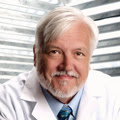Unprecedented times in health professions education
Posted: July 22, 2020
It seems an understatement to say that we are in unprecedented times in health professions education. For decades, the focus for health professions educators has been to educate clinicians, nurses, dentists, therapists, and others to provide quality accessible and affordable care to their patients and communities. The emergence of COVID-19 has restricted that education and has required focused and swift attention by educators and administrators. The need to prepare future clinicians, nurses, dentists, therapists, administrators, and educators has never been as concentrated as it has been over the past four months in the face of this pandemic. The overwhelming effects of COVID-19 will forever change how all health professionals are educated.
For some time now, health professions institutions have been working to restore andragogy by reducing (sometimes eliminating altogether) lectures; use technology to replace and/or enhance anatomy and hands-on laboratories; implement team-facilitated, active, and self-directed learning; and the promotion of individualized and interprofessional education.1,2
COVID-19 has produced practical and logistical challenges including concerns about patient safety, recognizing that our students may potentially spread the virus when asymptomatic and/or may acquire the virus in the course of their training. As it now stands, COVID-19 has the potential to affect students anywhere in the educational process. It is clear that social distancing and wearing of face covers is the most effective preventative strategy since the emergence of COVID-19, pending the development of a vaccine, treatment, or both.3 By definition, this precludes students, for the most part, from gathering in lecture halls or small-group rooms. Educators have been asked to rapidly migrate all their educational curriculum online until it is safe to invite students back on campuses.
The development of entrustable professional activities (EPAs), competency-based learning (CBL), and professional competencies with recognized milestones for achievement have transformed assessment. Many schools have decreased the basic science curriculum while integrating clinical experiences within this timeframe and revisiting the basic sciences later in the educational process.3
Updating content material in the online environment and virtual activities seem well-designed, but outcomes of these changes will require ongoing evaluation. The transition from the health professions school setting to home results in isolation, an increased use of email, and struggles with establishing boundaries between work and home, which could affect faculty, students, and support staff. Although the advent of interactive video (such as Zoom) has made a significant difference in the quality of communication.
Some schools have supplemented their clinical training with simulation exercises and telehealth scenarios. What exactly is the role of the health professions student in the clinical environment? Ideally, the student is part of the team as a learner who requires supervision. Formation of students’ professional identity and socialization relies on teaching and role modeling in these settings as students learn to prioritize patients and aspire to altruism. It is important these items are not left out of the equation.
What can educators do to create experiences for students who are usually assigned to inpatient or outpatient rotations? The options are continually evolving but may include consolidating and moving didactic sessions online earlier to allow for later entry into the clinical environment; creating and using available virtual cases; modifying the academic calendar to exchange later experiences and defer clinical rotations; and involving students in the telehealth environment, including electives based on experiences students are pursuing to enable them to assist and learn in this critical setting.
There is uncertainty regarding how long this situation will persist and increasing recognition that there may be periods in the future after re-engagement in a “new normal” environment, in which quarantines and social distancing may again be compulsory. The challenge is in providing authentic patient experiences for health professions students as a key component of education under these circumstances.
If schools defer clinical immersion experiences, there could be additional cohort classes of students in the clinical environment simultaneously and education could be adversely affected by the density of learners.
There have been some discussions that the COVID-19 pandemic may result in a healthcare worker shortage. If so, students may need to be engaged as part of the workforce and embedded in the clinical environment. This situation could change rapidly, and health professions schools will need to be flexible in their response. Some schools are considering early graduation with preparation of students to engage as either volunteers or as residents earlier in the clinical environment. The latter may require university flexibility with regard to the conferring of degrees as well as revised processes for state licensure.4
While in the midst of this COVID-19 crisis, it is crucial that the academic educational community learns from the experience and prioritizes a forward-thinking and scholarly approach as practical solutions are implemented. Reflection and evaluation must follow.
A silver lining of the pandemic may characterize a lasting transformation in healthcare with the advancement of telehealth, adaptive research protocols, and clinical trials with flexible approaches to achieve solutions. Students and educators can help document and analyze the effects of current changes to learn and apply new principles and practices to the future.
This is not only a time to contribute to the advancement of health professions education in the setting of active curricular innovation and transformation, but it may be a seminal moment for many of the disciplines in healthcare.
By Randy Danielsen, PhD, PA-C Emeritus
References
- Irby DM, Cooke M, O’Brien BC. Calls for reform of medical education by the Carnegie Foundation for the Advancement of Teaching: 1910 and 2010. Acad Med. 2010;85(2):220-227.PubMed Google Scholar Crossref
- Skochelak SE, Stack SJ. Creating the medical schools of the future. Acad Med. 2017;92(1):16-19.PubMed Google Scholar Crossref
- Del Rio C, Malani PN. 2019 Novel coronavirus—important information for clinicians. JAMA. Published online February 5, 2020. doi:10.1001/jama.2020.1490
Article PubMed Google Scholar - Emanuel EJ. The inevitable reimagining of medical education. JAMA. Published online February 27, 2020. doi:10.1001/jama.2020.1227
Article PubMed Google Scholar